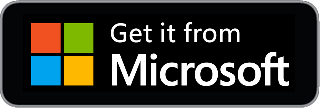Why Is RSS Not Used Anymore?
In the annals of digital history, the introduction of RSS (Really Simple Syndication) was a watershed event. This tool was designed to facilitate seamless content delivery, ensuring that voracious readers could easily stay updated with their preferred websites. As we observe the digital horizon of today, the once radiant glow of RSS seems dimmed. Let us journey into understanding the reasons for this transition.
The Proliferation of Social Media Platforms
The magnetism of social media platforms, with their intuitive designs and immediate content delivery, has dramatically altered the patterns of content consumption.
- Algorithm-Driven Content Delivery: Entities like Facebook and Twitter have employed intricate algorithms to craft content selections tailored to user propensities. Unlike the traditional RSS reader, where the responsibility was upon the user to cherry-pick sources, these platforms introduced a variety of content, often uncovering new areas of interest for the user.
- Engagement Beyond Mere Reading: Social platforms such as Instagram and Twitter enabled a more interactive content experience, offering likes, shares, and discussions, creating a vibrant community around content.
- A Multifaceted Multimedia Experience: In contrast to the largely text-centric news reader or RSS tool, social media effortlessly melded videos, graphics, and interactive elements, rendering a richer user journey.
The Digital Centralization Conundrum
The towering presence of a few digital juggernauts inadvertently shifted users from decentralized aggregator news tools like RSS.
- The Decline of Google Reader: 2013 saw the cessation of Google Reader, an emblematic RSS tool. This action was, by many, perceived as the symbolic curtain fall on the golden age of RSS.
- Monetary Ambitions: Predominant platforms, with eyes set on advertising treasures, endeavored to encapsulate users within their realms. The nature of RSS, which inherently channeled users to external domains, stood in stark contrast to this monetized vision.
The Intricacies of RSS
Despite its undeniable utility, RSS was not without its set of challenges:
- Initialization Challenges: For the uninitiated, setting up and maintaining an RSS feed or using a feed reader to read RSS feed might appear more daunting than the straightforward act of subscribing to a social media outlet.
- Potential for Information Glut: Absent of careful curation, news feeds RSS could potentially swamp a user, especially if myriad sources were being monitored.
Remnants of RSS in the Contemporary Epoch
Though its once ubiquitous presence may have receded, RSS is by no means extinct:
- The Podcasting Sphere: The world of podcasting continues its allegiance to RSS for broadcasting its content across platforms.
- Tech Savants: The pristine allure of an advertisement-free news stream ensures RSS still holds a special place among certain circles, notably tech enthusiasts.
In Summation
While RSS might not be the torchbearer in today's digital tapestry, its core tenet—direct and unadulterated content delivery to users—holds steadfast importance. For those with a penchant for such an experience, untarnished by algorithmic interferences and advertising noise, it would be astute to acquaint oneself with contemporary tools that resonate with the spirit of RSS. In this regard, the Feed Viewer app presents itself as an epitome, deftly amalgamating the timeless essence of RSS with the demands of the modern digital consumer.

